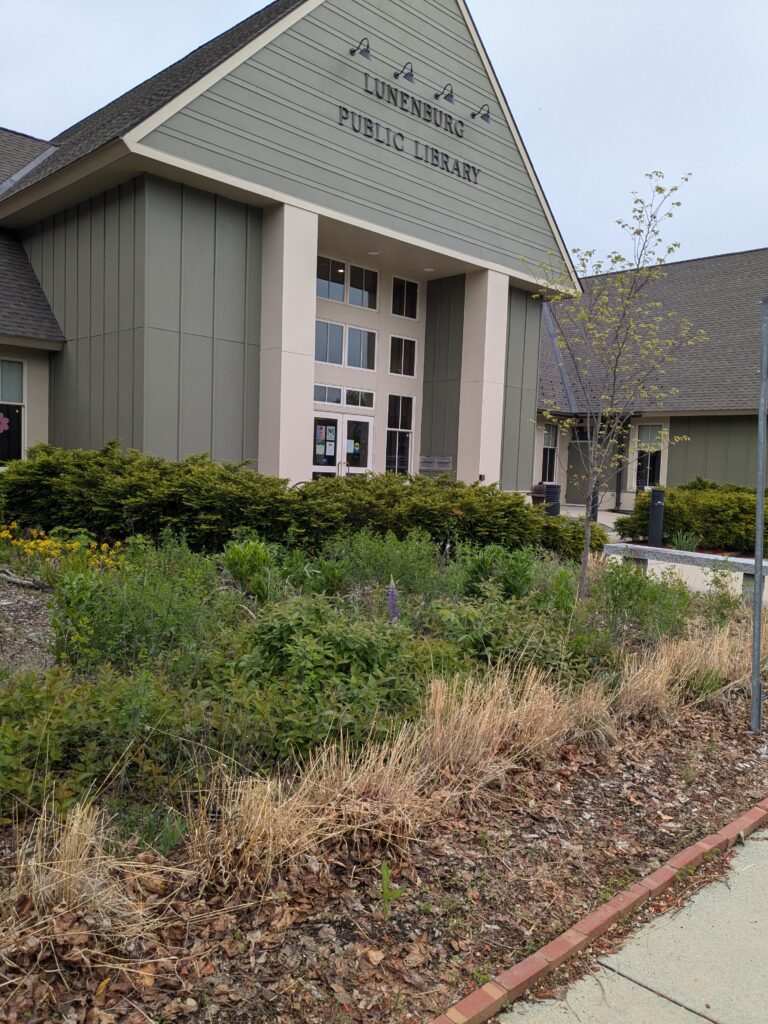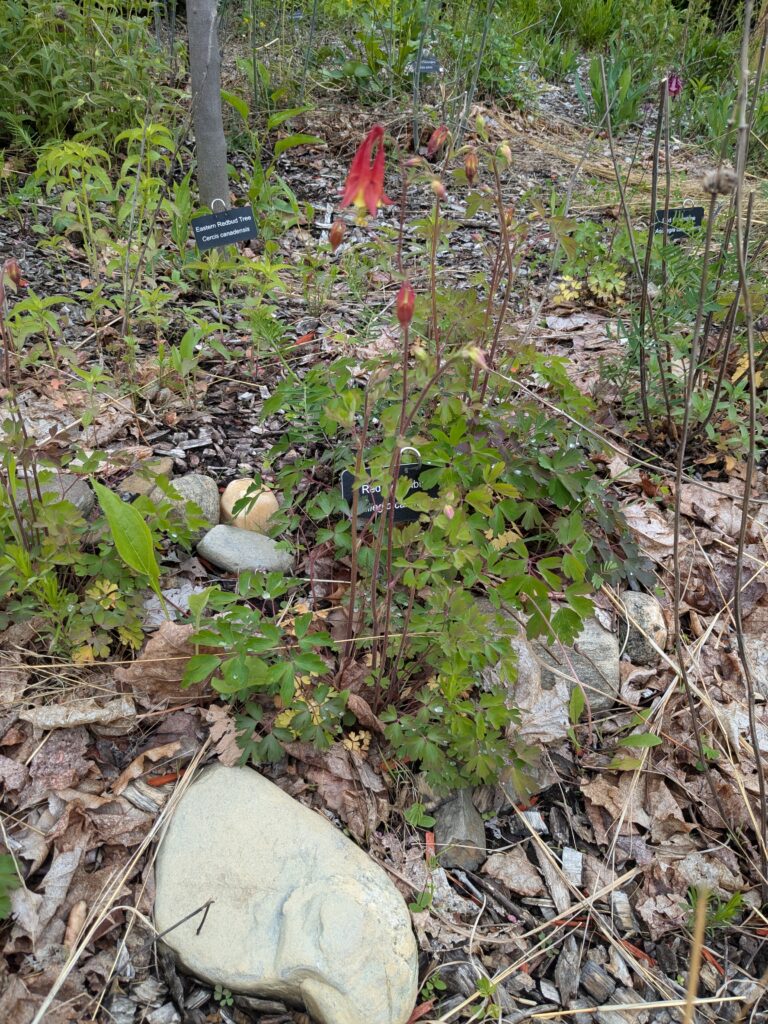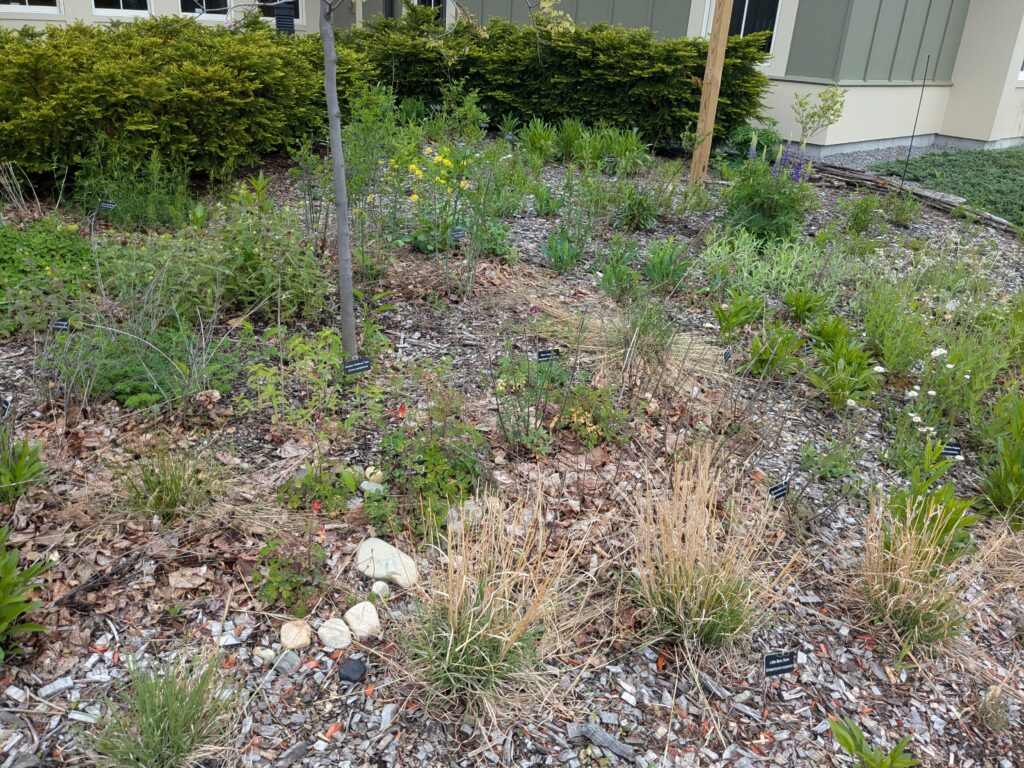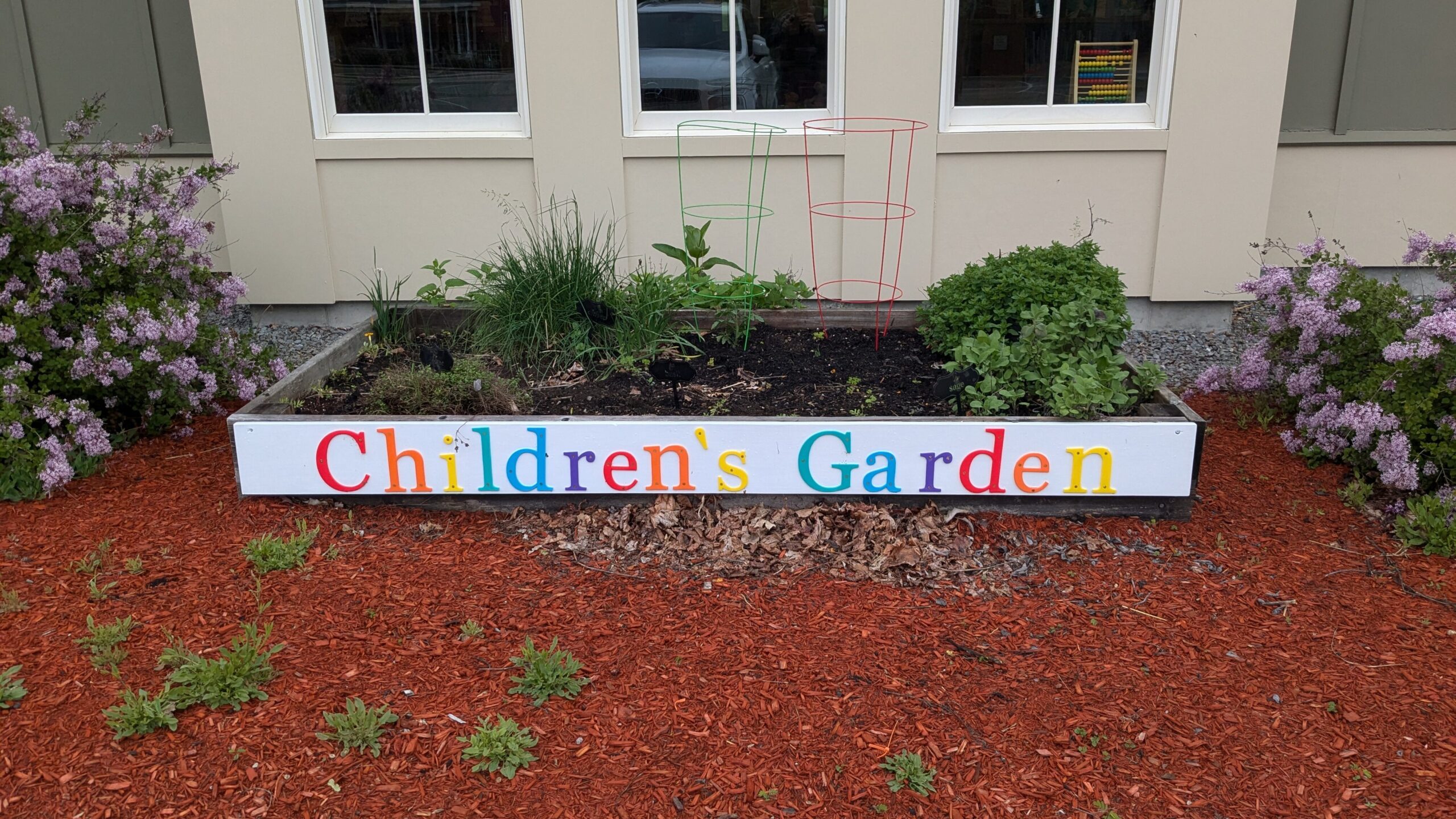
Springtime in the Garden

A new growing season has arrived and many of the plants in our front gardens are getting ready to bloom. If you visit the gardens soon, you will see the eastern redbud trees, golden and running groundsel, plantain pussytoes, red columbine, wild sundial lupine and common blue violets already in bloom. The penstemon flowers will be opening soon. We humans enjoy and appreciate flowers, but the colors, structures, scents, nectar and sometimes oils of native flowers have been designed by millions and millions of successful visits by their pollinating partners.
Libraries share stories. If you are able to make the time, the gardens in front of the library also offer stories. As you look at the flowers in the front gardens, imagine the amazing story about how native plants and pollinators have shaped each other and have grown to depend on each other for survival over the centuries. There are many chapters to this long lasting relationship story; let me share one of them with you.

- Red columbine (Aquilegia canadensis) and Ruby throated hummingbirds (Archilochus cloubris)
We only have one species of hummingbird here in Massachusetts, the ruby throated hummingbird. These tiny birds spend the winter in Mexico, Central American or some islands in the Caribbean, traveling thousands of miles. They return each spring to raise their young.
It is no accident that their spring migration coincidences with the flowering period of the red columbine, because the red columbine has evolved to appeal specifically to its preferred pollinator, the ruby throated hummingbird. Here in North America, red flowers indicate that the plant is trying to attract a hummingbird. Birds have a receptor in their eyes that allows them to see red very well. Bees don’t, and this makes it difficult for bees to distinguish between the color red and the color green. The lovely, red tubular flowers match the length and shape of a hummingbird’s bill. The tall flowering stalks have few high leaves, allowing hummingbirds to easily approach the flowers. Hovering in the air, the birds use their long, forked tongues to reach deep into the flower to lap up the abundant nectar. The nectar has amino acids and a diluted viscosity that are tailored to hummingbirds’ needs. As they hover, the hummingbirds inadvertently collect pollen on their feathers and bill, transporting the pollen and pollinating the next columbine flower they visit. In this mutual relationship, the columbines are trading the energy it takes to produce nectar with the hummingbird’s ability to spread its pollen to other columbines.

What pollinator visitors are you seeing visiting the plants in the library gardens? Spend a few minutes by the gardens. Can you see some of ways the flowers have adapted to attract pollinators? Please let one of the librarians know who you saw in the gardens and what plants they were visiting!
Pollinator Garden
In front of the library, you’ll find our vibrant pollinator garden, a haven buzzing with life! This garden isn’t just beautiful, it’s specifically designed to support endangered native bee species. Planted with a variety of colorful, native plants and flowers rich in nectar and pollen, it provides vital food sources for these vital pollinators. So come visit, explore the garden, and learn about the essential role native pollinators play in our ecosystem!
Children’s Garden

Children’s Herb Garden Project – In the spring of 2021, the idea of creating a children’s garden on library grounds began to take shape. Our vision is that this garden will be a sensory experience for the children and families who visit the library. To this end, we plan to grow herbs and vegetables that can be touched, smelled and tasted by lots of little visitors. Now this garden is planted, maintained, and loved by children year after year!
See the children’s page for all upcoming planting programs.
Teen Garden
Teen Hot Pepper Garden – In 2025 the Teen Room is growing hot peppers! Our goal with our garden is to promote food literacy and show teens the process of growing their own food from seed, an important life skill. We have planted 12 varieties of hot peppers in our garden and plan to learn how to make hot sauce with them at the end of the summer. Stop by on your next visit to the library and learn more about our peppers!
See the teen page for all upcoming planting programs.
